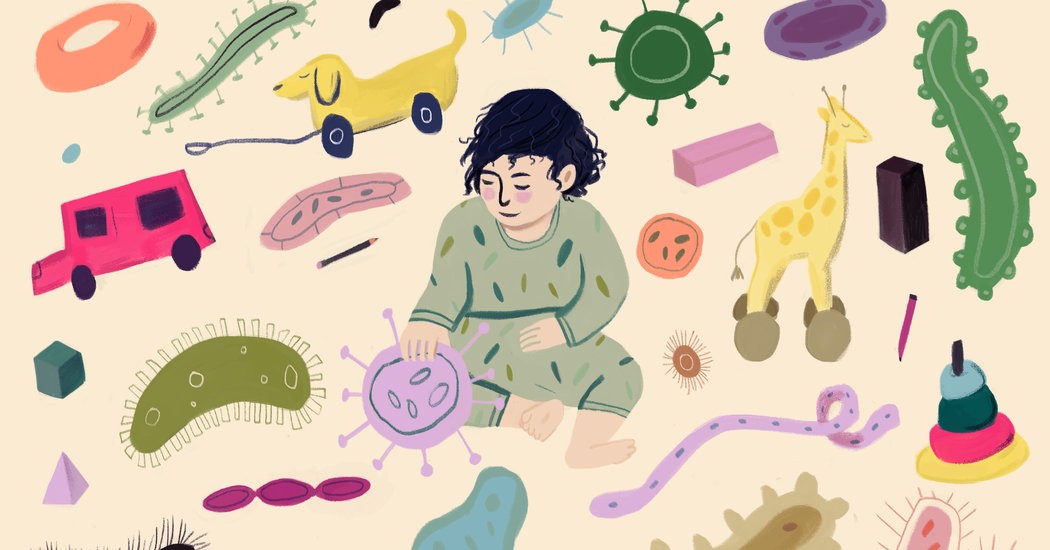The onset of the covid-19 pandemic had us all in a vulnerable position. The world was trying to figure out the extent of the spread. There was mixed information from all corners of the world, but one piece of information came as a relief—children were less susceptible to coronavirus. It was only going to be a matter of a few weeks before we were to witness the indirect effects of the pandemic on children.
From issues that we hardly anticipated, such as depression, anxiety, stress, poor eyesight, discontinuing education, to the ones that we were trying to overcome before the pandemic, such as child labour and child marriage, all began to pose a grave threat to the safety of children.
With experts fearing the reversal of decade long efforts to improve the lives of children, one can safely say that it is the worst time for children to simply be themselves, and that the current measures being taken are just not enough to protect the rights of children.
We present seven headlines from the past weeks that highlight the several issues faced by children today, their impact, and steps taken, or the lack thereof, by us as a society.
1.INDIA’S ONLINE CLASSES ARE OUTDATED FOR DISABLED KIDS, COVID JUST MADE IT WORSE
The academic journey of children with disabilities has never been a smooth sailing one, but it has only gotten more challenging due to the pandemic. Although the eVidya initiative does promise to cater to learners with visual and hearing impairment, it does not address as to how it will be made accessible to learners from all economical backgrounds. Access to technology can assist persons with disabilities in getting better educational, sociocultural, and economic opportunities; however, the manner in which digital education is currently being made accessible is outdated and uncoordinated.
Education for children with disability has mostly been seen from the point of access, not inclusion. Covid-19 could be an opportunity to enable this inclusion for all children by facilitating common grounds in the field of education using technology-based learning.
2.SCREEN-TIME SPIKE LEARNING ISSUES: HOW E-CLASS OVERDOSE IS HURTING KIDS
The covid-19 outbreak has brought monumental changes in children’s lives. With everything going digital, from school to casually hanging out with friends, children are being forced to adjust to the changing dynamics of social and interpersonal relationships. Consultation calls to doctors regarding weak eyesight and constant headaches amongst children have spiked. Some parents are even considering making their children drop a year to avoid health risks. The National Council of Educational Research and Training (NCERT) has released guidelines for the state governments to build on, but they are only advisory in nature. Authorities and most schools are trying to reduce virtual learning hours, but their implementation remains a challenge.
3.CHILDREN IN 62 PERCENT SURVEYED HOMES DISCONTINUED EDUCATION AMID COVID19
Save the Children, surveyed 7,235 families across 15 states to understand challenges, thematic priorities, and the impact of coronavirus among target beneficiaries. They found that children in a whopping 62% of the surveyed homes discontinued their education amidst the coronavirus outbreak. The report highlights a lack of educational support, lack of access to a smartphone or the required internet bandwidth connection, lack of livelihood opportunities, and an acute shortage of cash as the most crucial challenges. The report also states that nearly half of these households had started taking distress measures like credit, mortgage, and loan, which hints at an unfortunate rise in child trafficking and child labour.
4.CHILD LABOUR CASES RISE DURING LOCKDOWN IN NOIDA
Child labour is a result of the socioeconomic conditions of a country. In the midst of the covid-19 pandemic, with the economy being at its worst state, we are now witnessing a rise in child labour. Officials handling the national Childline are also reporting an increased number of calls reporting child labour. The article highlights three case studies of the plights of poor families being forced to push their children in to child labour.
5.INDIA’S COVID19 LOCKDOWN IS MAKING IT EASIER FOR GIRLS TO BE FORCED INTO CHILD MARRIAGE
Various state government officials and activists across Indian states are reporting an unnatural spike in child marriages. Increased poverty and shutting down of schools and community centres have been cited as reasons for the ‘abnormal’ spike. It has been noted that families are exploiting the restrictions to conduct low-cost ceremonies in absolute secrecy within their homes. The article does not forget to point at a positive development; mass weddings of children in Rajasthan have dropped sharply, and trafficking by the way of child marriage, too, is severely affected due to restrictions on travel and transport.
6.KERALA GOVT BEGINS EFFORTS TO REDUCE SUICIDES AMONGST CHILDREN DURING LOCKDOWN
The Kerala model leads the way in managing mental health too. The Kerala government has initiated the Ardram Mission that aims to prevent suicide among the general population along with the reduction of depression. Alongside, the state has also initiated a counselling outreach Ottakkalla Oppamundu (‘not alone with you’) which managed to reach out to close to 64,000 students. Increased substance abuse among parents and discord in family relations are some of the reasons being cited for the increasing mental health conditions among children.
7.COVID HAS UNDONE CHILD RIGHTS PROGRESS. HERE’S WHAT THE GOVT MUST DO.
Anganwadi services being disrupted, mid-day meals being stopped, and schools being shut down have cascaded into a major jolt to the child rights progress. It is believed that progress made by nations in the last 5 to 10 years to improve maternal survival, universal schooling, and to reduce child mortality rates and child labour has been reversed. Children are now more vulnerable to violence and abuse and have no safe spaces to go to. Strengthening public distribution and a staggered opening of schools to facilitate mid-day meals are some of the suggestions presented.





